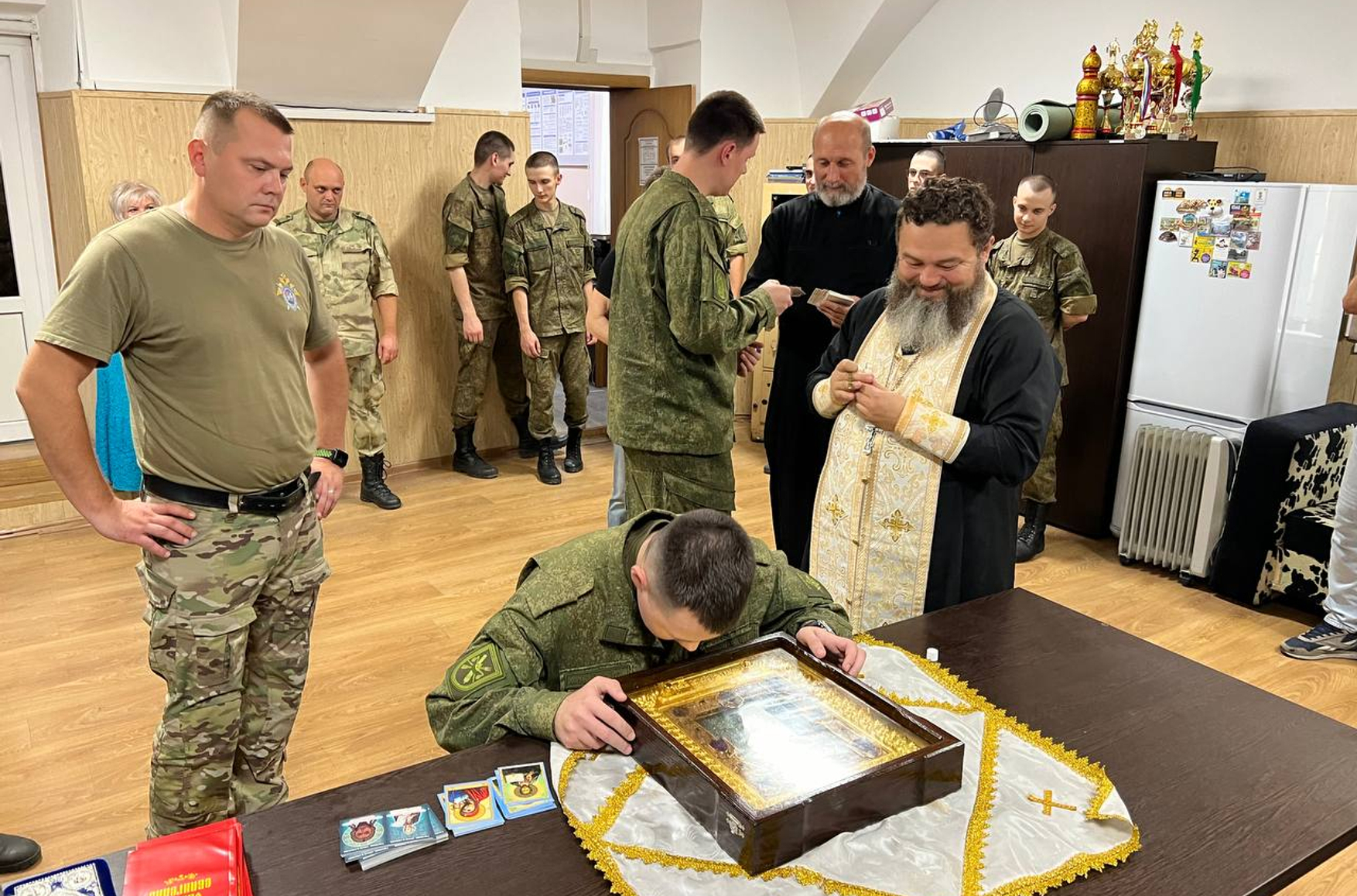

In the gated community of Bachurino just outside Moscow, the leadership of the SVR’s illegal intelligence division worships at a small chapel containing a purportedly miraculous icon. The Mother of God “Softening of Evil Hearts,” which has spread its oily magic to Orthodox believers the world over, has also brought significant benefit to its well-connected handlers. One of them, a former boxer and crime boss from Balashikha, built the church on the grounds of the SVR elite’s exclusive suburb. Patriarch Kirill has mentioned the object in his sermons, and Vladimir Putin is even said to have prayed with the icon personally. However, that was not enough to save the rector of the church from charges of distributing child pornography — evidence of which was found on his phone during a visit to the front lines in Ukraine.
Content
Benefactor “Petrukha”
The uniformed bell ringer
SVR generals and the pedophile priest
Benefactor “Petrukha”
According to the legend told by Margarita Vorobyova, it all began on May 2, 1998, when her 14-year-old daughter paid 25 rubles for an icon printed at a Russian Orthodox Church facility in Sofrino and glued onto a piece of fiberboard. They placed the icon in a cabinet, and the next morning Vorobyova was astonished to find that the printed image had — at least in her telling — begun to give off fragrance and exude oil. Little is known about Vorobyova’s background. She once served at St. Nicholas Church near Pavlovsky Posad (which had been used as a warehouse for chemical fertilizers in Soviet times) and later worked for the advertising company Salamandra Lab.
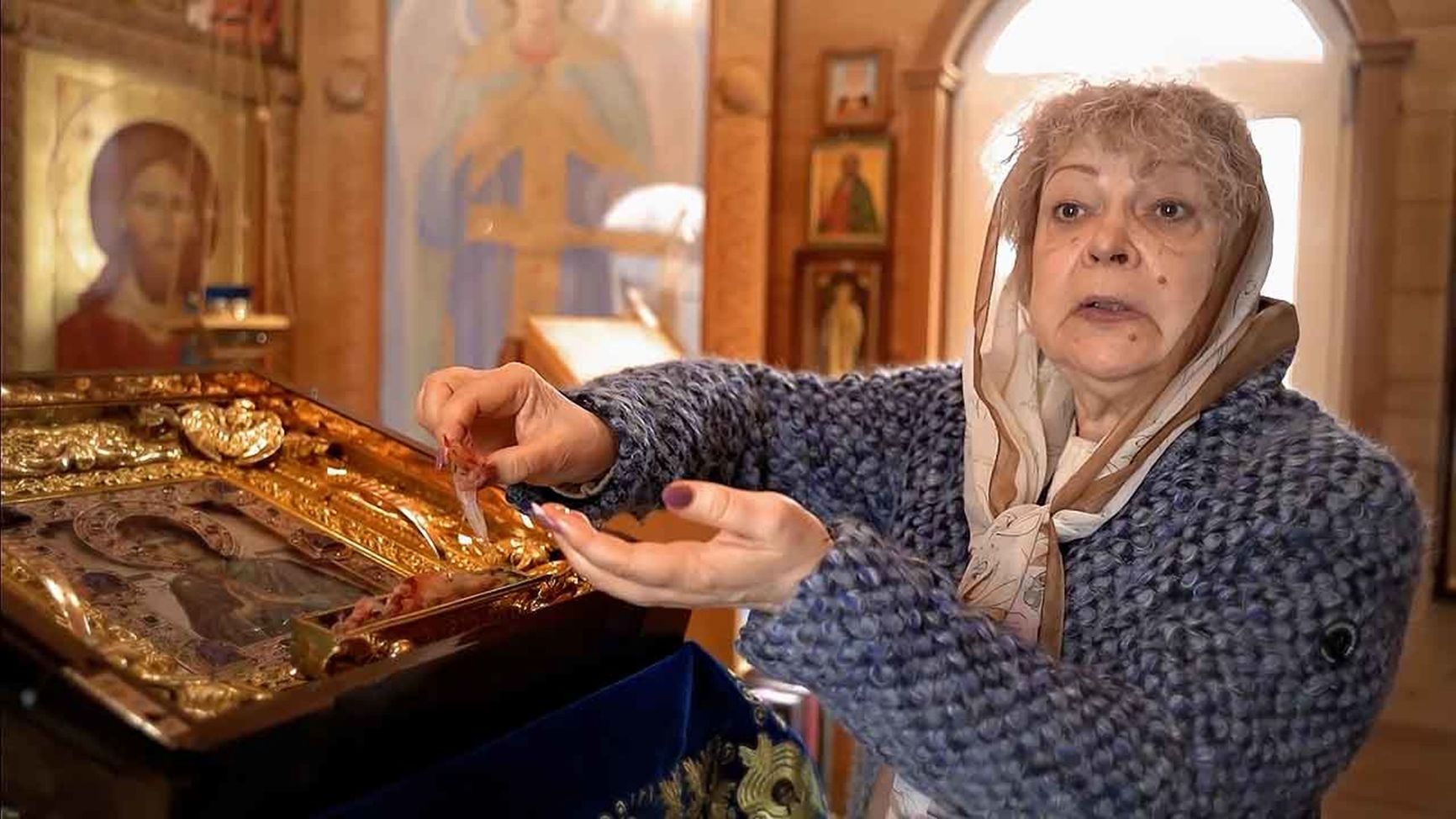
Margarita Vorobyova
Vorobyova immediately called her friends to tell them about the miracle. Soon, people began flocking to the apartment she shared with her daughter on Izmailovo Boulevard, and rumors spread across Moscow about the purported healing properties of the oil seeping from the image of the Mother of God “Softening of Evil Hearts.” It was claimed that bedridden people who anointed themselves with the oil had suddenly gotten up on their feet, others that cancer patients recovered as a result of its divine properties, and that childless women were able to give birth with the aid of the icon’s intercession.
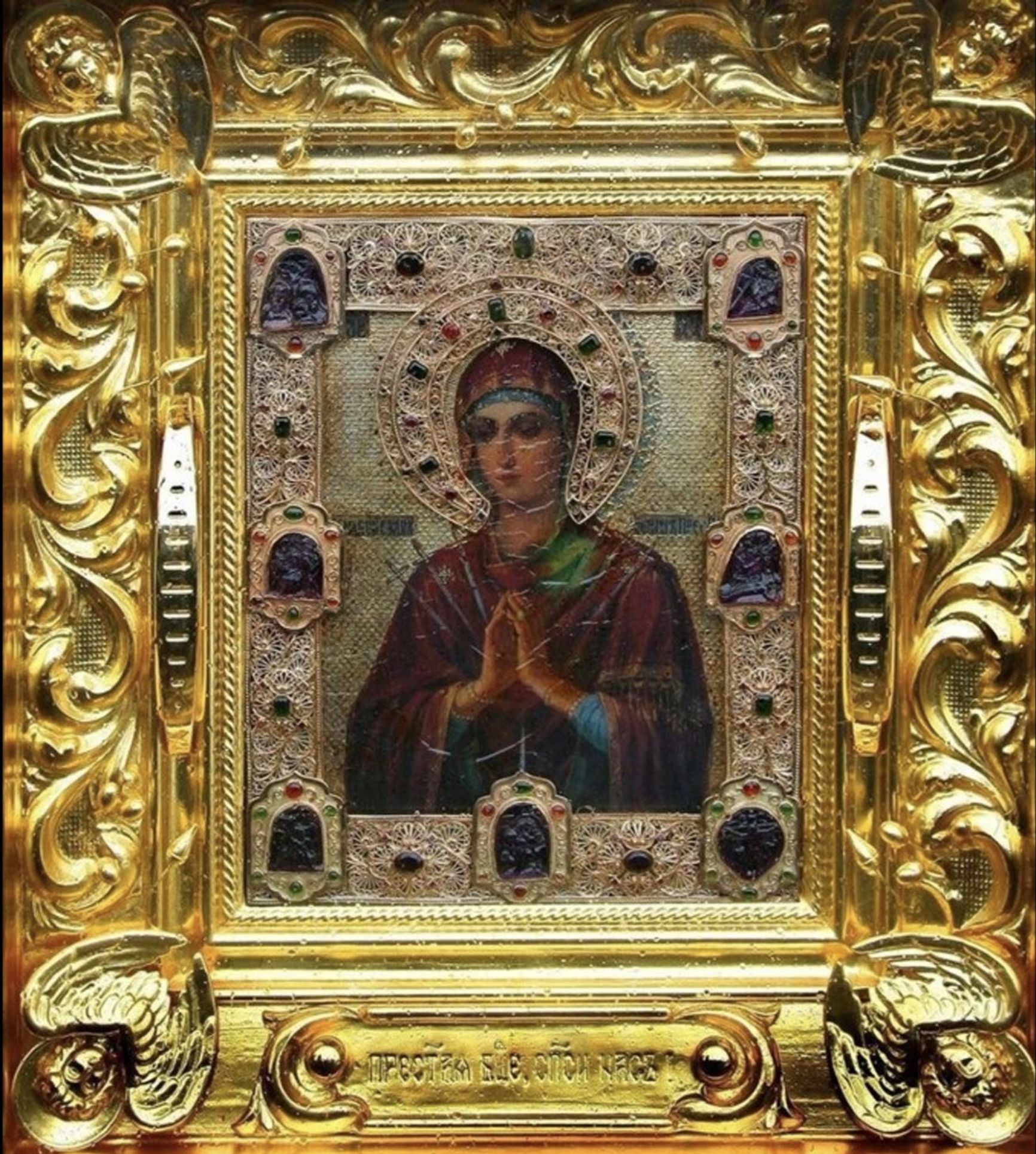
The Softening of Evil Hearts icon
The neighbors quickly grew tired of the crowds in the stairwell and filed complaints with the police. Vorobyova began looking for a sponsor to build a church for the icon, but in bank offices she was politely heard out before being to and just as quickly dismissed. According to the icon’s keeper, she eventually found help through Patriarch Kirill’s spiritual adviser, Elder Iliy (Nozdryov) of Optina Monastery. “Such an icon must not be hidden — start showing it around,” the elder advised her as they parted.
Soon another miracle occurred: Anatoly Petrov, a vice president of the Russian Boxing Federation better known as a Balashikha crime boss nicknamed “Petrukha,” appeared at Vorobyova’s doorstep. Petrov’s generosity knew no bounds — he not only agreed to fund foreign tours of the “miracle icon,” but also provided money to build a church at a site in the SVR’s secret settlement in Bachurino. In addition, the crime boss bought a second plot of land in the settlement for Vorobyova’s cottage and paid for her daughter’s college education.
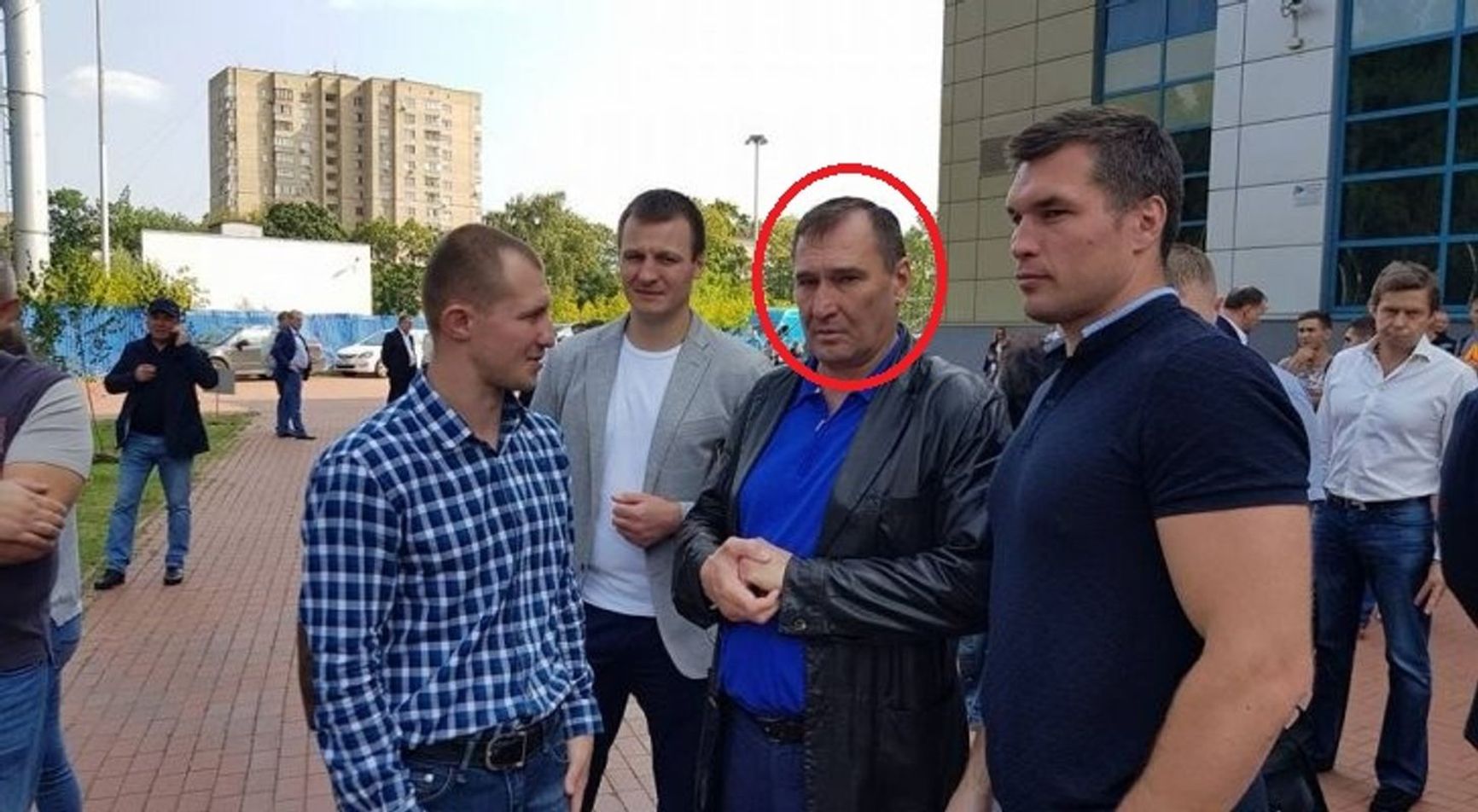
Anatoly Petrov (third from left)
In Soviet times, Petrov was a member of the national boxing team but later ended up in a penal colony for hooliganism. In Balashikha, the former athlete is regarded as a protégé of Podolsk organized crime group leader Sergey Lalakin (a.k.a. “Luchok”) and is believed to have been involved in contract killings. For instance, persistent rumors circulated in the city that the Verenyov gang, which Petrukha allegedly ran with in his youth, organized the 1996 murder of Saltykovka mayor Vladimir Moskalets and was connected to the death of Darya Tyurina, a 17-year-old waitress from the Laguna café.
According to one version, Moskalets demanded too large a bribe from the gang for land plots, leading the gang to shoot him. Similarly, when the owner of the café where the girl worked refused to pay protection money, hired gang members allegedly set the place on fire. An autopsy revealed that Tyurina was five months pregnant and expecting twins.
Among other criminal stories linked to Petrov, a video surfaced online showing his uncle, Alexander Ivanov, and the then-head of Balashikha, Yevgeny Zhirkov, sitting at a table with a bag full of cash while deciding who would win a road construction tender. Shortly after the shocking video was published, Petrukha’s uncle was found dead, and in 2019 Zhirkov was sentenced to nine years in prison for bribery.
According to one of The Insider's sources in Balashikha, since the early 2000s Petrov has been actively “laundering” his criminal image: he donned the uniform of a Cossack general, founded a charity to support boxers, made frequent television appearances, and established friendships with influential figures in the Russian Orthodox Church and the state’s security services.
Petrov worked hard to “launder” his criminal image: he founded a charity to support boxers and befriended influential hierarchs of the Russian Orthodox Church
“Now he’s got everything covered everywhere,” The Insider's source claimed. “Before the war in Ukraine, he was constantly in Nice, Zurich, London, and Paris, and he built a mansion and a hotel in Cyprus. Keep in mind that the supervisory board of the Boxing Federation, where Petrukha serves as vice president, is headed by the chief of the Presidential Security Service, Alexey Rubezhny. It also includes top oil executive Sechin and a bunch of other VIPs and power brokers.”
As part of these efforts, Petrov took on the mission of Margarita Vorobyova. “This icon is my whole life,” he declared in 2018 at a ceremony marking the miracle’s 20th anniversary. By then, the little church in Bachurino had been welcoming parishioners for more than a decade. In 2006, as soon as services there began, the icon reportedly began to exude oil profusely. The “holy” substance was bottled, and a church shop was opened.
The uniformed bell ringer
While Vorobyova mainly sells the oil in the church shop, her husband, the church’s bell ringer Sergey Fomin, accompanies the icon on overseas trips. Conveniently, Fomin holds a diplomatic passport and introduces himself to journalists as a military officer serving in the Moscow Patriarchate’s Department for Cooperation with the Armed Forces and Law Enforcement Agencies.
In March 2014, Fomin was in Crimea alongside the occupiers (dubbed “polite people”). In Sevastopol, a citywide prayer service was held before the myrrh-streaming icon with the participation of then–State Duma deputies Franz Klintsevich and Sergey Markov, who has since been labeled a “foreign agent.” And while the faithful prayed for peace, GRU special forces were seizing strategic sites.
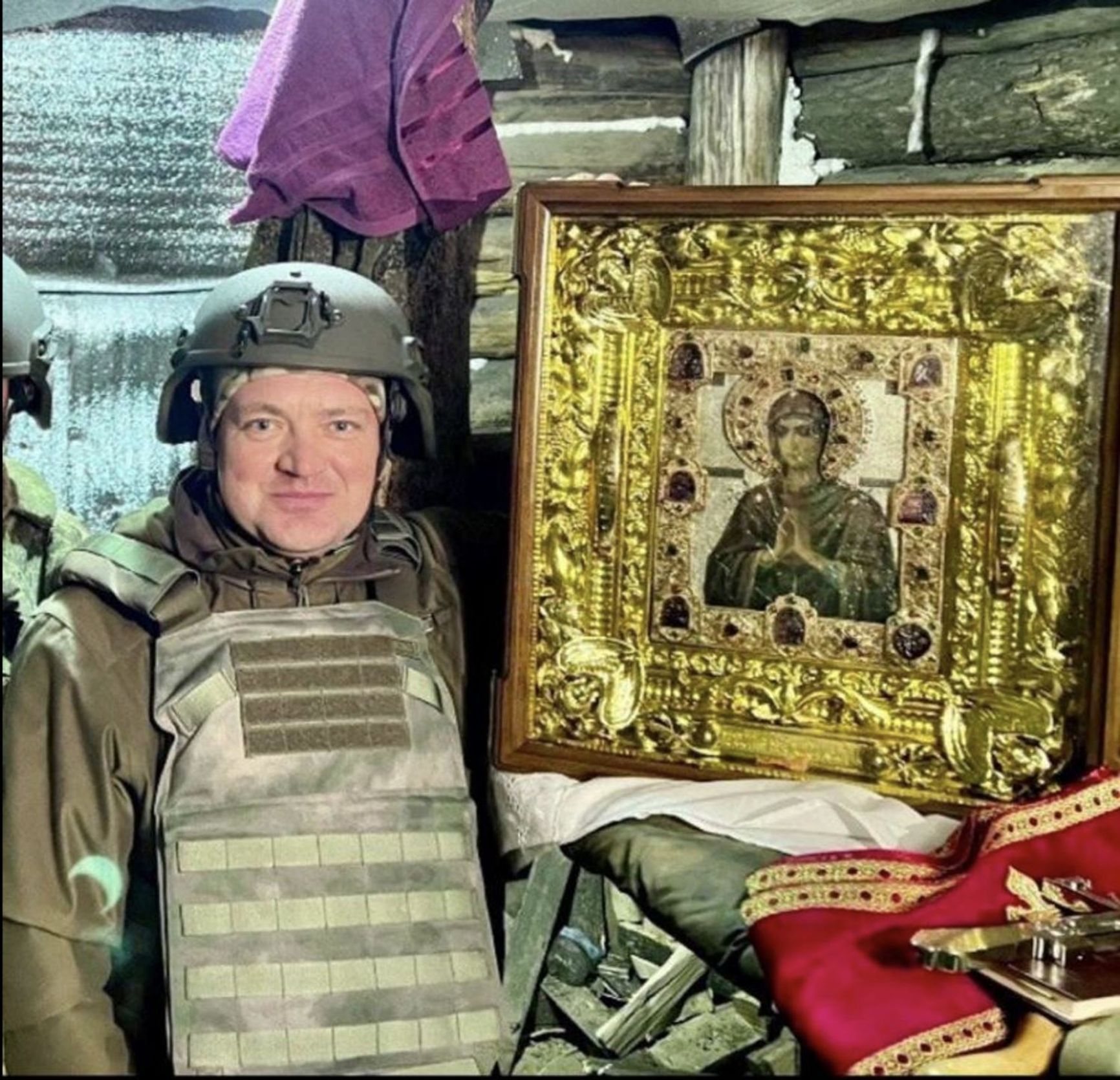
Bell ringer Sergey Fomin at the front
One of the stories Fomin constantly tells during his travels is about a two-year-old girl who accidentally ate dog food. The child contracted a severe infection and was near death. Doctors were reportedly powerless. Then the girl’s mother poured some of the miraculous oil from the icon into her daughter’s mouth, and by morning the ulcers and sores had almost disappeared.
But two other stories are his particular source of pride. According to Fomin, the “miracle icon” was once brought to Putin for prayer. He mentions the secret visits to Novo-Ogaryovo only in private conversations, but church-affiliated websites have written about them. And second, the icon from the spy settlement supposedly helped Kirill Gundyaev become patriarch at the 2009 local council, when it reportedly began to exude oil profusely. In gratitude, the patriarch has mentioned it in his sermons.
The “miracle icon” has been brought to Putin for prayer
Over time, the “Softening of Evil Hearts” icon became a successful commercial project — with its own budget, advertising department, and musical accompaniment. Before it arrives in a city, local news outlets air TV segments about the miraculous oil that is said to cure people of terrible diseases. Public figures are brought in to appear in promotional videos.
For instance, TV propagandist Boris Korchevnikov traveled with the icon to occupied Donbas, where he was filmed speaking with militant commanders. Actress Yekaterina Bestuzheva claimed that thanks to the icon, she had recovered from chronic allergies. The icon from Bachurino was also promoted by former ombudsman Pavel Astakhov and pro-government blogger Andrey Nikolayev.
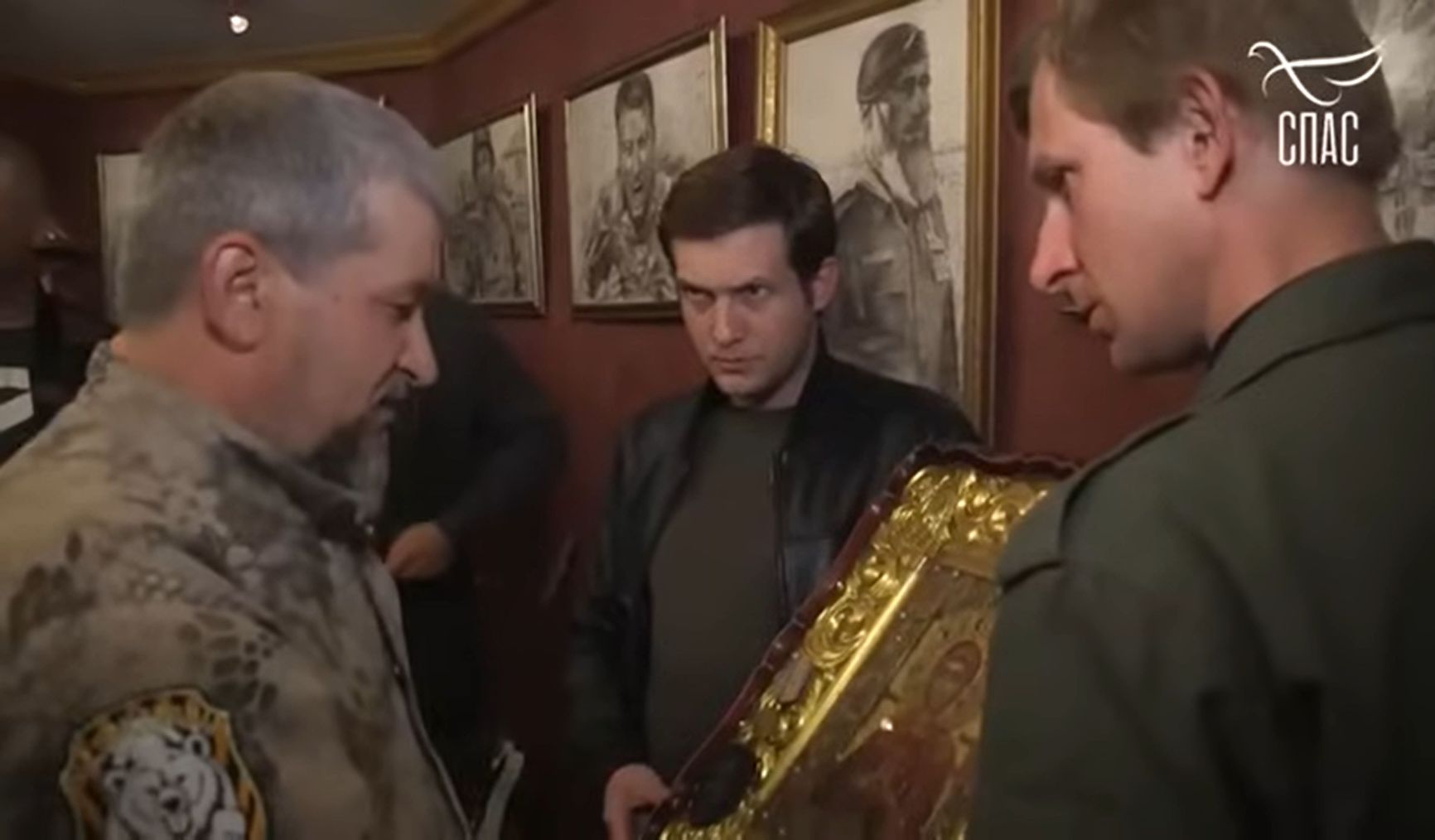
Boris Korchevnikov with the icon (center)
Before the start of Russia’s open invasion of Ukraine, the icon toured several times in the United States, Canada, Europe, Australia, and the Philippines. Orthodox clergy abroad called it “our shrine” and drew crowds of believers, mainly from Russia, Moldova, Ukraine, and Belarus. And wherever the icon went, miracles were said to occur.
For example, Metropolitan Mitrofan (Badanin) of Murmansk, who previously served in the Northern Fleet, where he attained the rank of captain second class, told a story about a Roma man in Italy who tried to steal the icon right from the church — as soon as the thief touched the frame, he was almost paralyzed.
Other priests spread even more fantastic tales, all while making sure to stress who Russia’s main enemy is. “This icon was in Japan when the Fukushima volcano exploded,” one clergyman said during a sermon in separatist-occupied Donetsk in 2014. “The powerful radiation should have poisoned our Far East. But the icon was there, and the wind steadily blew toward America.”
To avoid unnecessary risk, Fomin stopped bringing the icon into combat zones five years ago — for those trips, he had an exact copy commissioned, named the Donetsk Icon of the Softening of Evil Hearts. Naturally, the copy immediately began to exude oil, and miracles followed: Ukrainian shells supposedly stopped exploding, American missiles went off course, and bullets could not hit soldiers anointed with the miraculous oil. All these tales are told by the keeper of the Donetsk icon, KGB–FSB veteran Sergey Polyakov, who began his service as a logistics officer in the Khabarovsk branch of the KGB’s Alfa unit and, after retirement, reinvented himself as an Orthodox patriot.
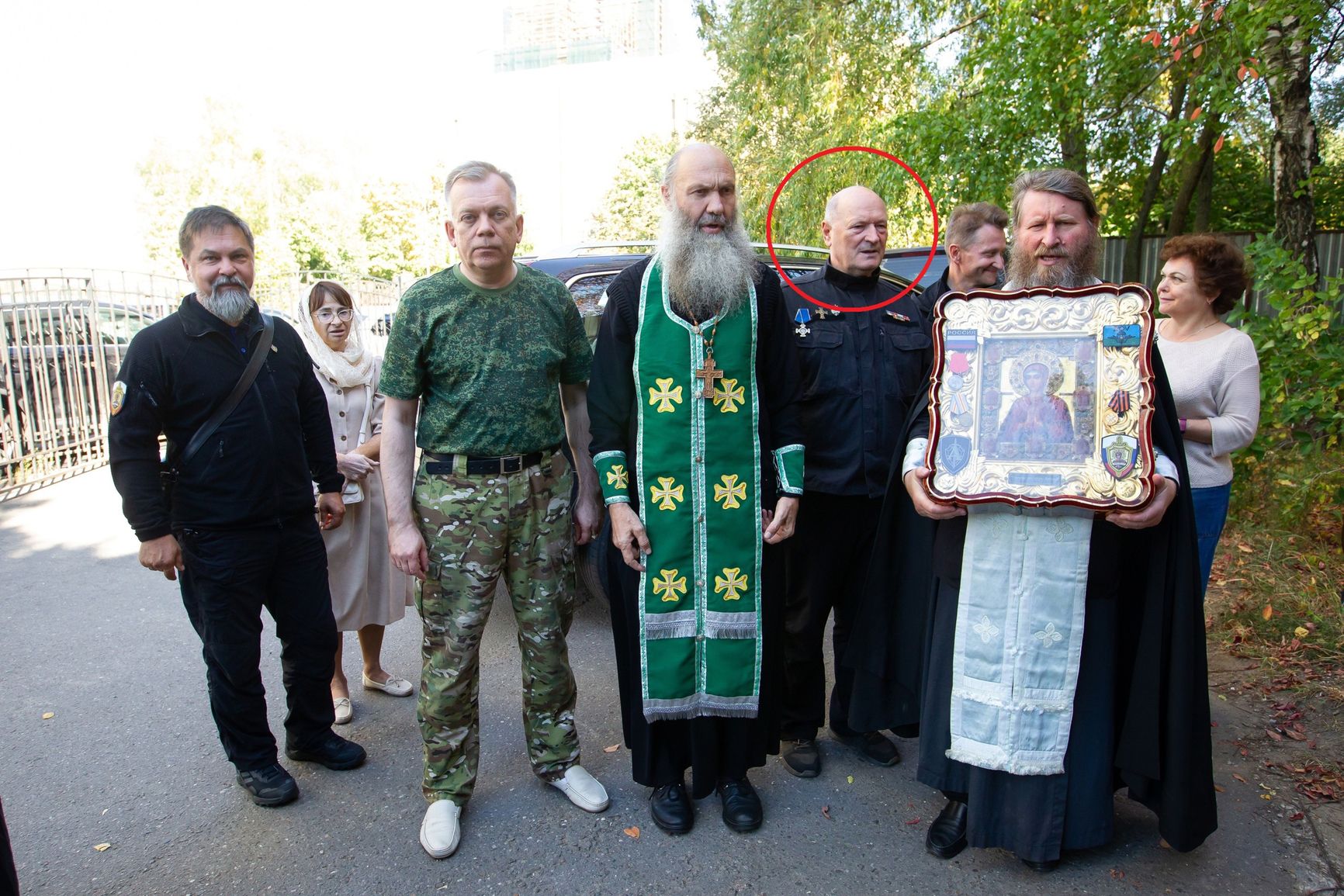
KGB veteran Sergey Polyakov (second from right)
The Insider contacted a former employee of the church in Bachurino. She had worked there for several years before quitting: “You have to understand that Petrukha, the bell ringer Fomin, Vorobyova, and the KGB man Polyakov are all part of the same cozy circle,” she said. “They skillfully play along with the Russian Orthodox Church with their tales of the miracle-working icon. Abroad, they promote the ideas of the ‘Russian world,’ which suits Russian propaganda perfectly. Political officers from the Defense Ministry are interested in them too — it helps them fill soldiers’ heads with illusions before sending them to die. And I’m sure they’re not doing it for free. Anyway, after watching this circus long enough, I quit.”
Notably, several believers have asked Fomin to show them what’s inside the icon’s frame. Each time, he replied that the precious frame could be damaged before embarking on a diversionary story about how “the holy substance” had been tested by experts from the Russian Orthodox Church, who claimed to have found in it traces of some rare African plant — proof, he said, of the icon’s “living nature.” The Russian Orthodox Church, for its part, stated that no such examination had ever been conducted.
SVR generals and the pedophile priest
Every year, large religious processions are held in Bachurino in honor of the miracle-working icon. They are attended by officers of the Foreign Intelligence Service and their families. Among the crowds, SVR generals Vyacheslav Konanykhin and Yevgeny Kolesnikov — both classified figures — have been spotted more than once with their relatives. Konanykhin’s wife and daughter work at the central office of the Supreme Court, while Kolesnikov’s wife is a homemaker. It was not possible to find out where Konanykhin previously served as a spy, but Kolesnikov began his career as a KGB First Chief Directorate operative under diplomatic cover in Cairo.
SVR generals took a liking to Bachurino back in the early 2000s. The first residents included the now-deceased SVR director Yevgeny Primakov, his personal physician David Ioseliani, and the agency’s urologist Oleg Apolikhin, whom his highly-placed patients nicknamed “the SVR’s member-correspondent.”
A vast mansion in Bachurino was also built by Putin’s longtime KGB colleague Andrey Belyaninov, who headed Russia’s customs service from 2006-2016. In July of that year, officers from the FSB’s Internal Security Directorate raided the chief customs officer’s home and discovered gold bars, antique paintings, and shoeboxes stuffed with dollars. However, Putin did not authorize “Belyash,” as Belyaninov was known in the customs service, to be imprisoned. He now heads the Assembly of the Peoples of the World, promoting the so-called values of the “Russian world.”

Andrey Belyaninov's mansion in Bachurino
Anti-Corruption Foundation
Fighters from the classified SVR Zaslon unit are regularly brought to the church for anointing with oil. The unit provides security for Russian embassies and accompanies senior officials, intelligence generals, and top executives of major state corporations on foreign trips. For cover, its members are officially listed as employees of the Foreign Ministry and housed in ministry-owned buildings near the SVR headquarters.
Until recently, the rector of the intelligence officers’ church in Bachurino was Archpriest Dmitry Kuvyrtalov, who told journalists that he had repeatedly witnessed the icon bleeding profusely.

Sergey Fomin and Archpriest Dmitry Kuvyrtalov
However, the “bloody tears” apparently appeared for a very different reason: last year the priest was convicted of distributing child pornography. In 2023, he went to the “special military operation” zone as a spiritual adviser for the troops, and at one point, he left his unlocked phone in a command bunker. During the night, a sentry discovered photos of a naked schoolgirl on the device.
According to investigators, Kuvyrtalov had been corresponding with a girl from the Altai region and paid her to film and photograph herself naked. The child pornography was later sold to other contacts. As The Insider found out, the customers were priests from Moscow, the Novosibirsk region, and annexed Crimea. Father Dmitry was excommunicated by order of Patriarch Kirill, and Moscow’s Zyuzino District Court sentenced him to three years in prison.